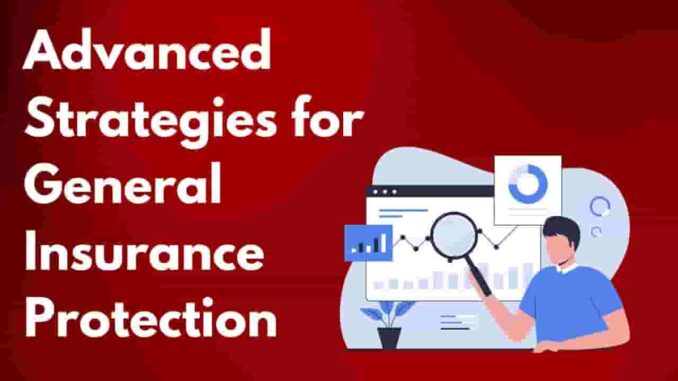
In today’s unpredictable world, having a robust insurance strategy is essential for protecting your assets and minimizing risks. Whether you are an individual looking to safeguard your personal assets or a business owner aiming to secure your enterprise, understanding the fundamentals of insurance strategy can make a significant difference. This guide will walk you through the essential steps of crafting an effective insurance strategy to ensure you are well-protected.
Understanding the Basics of Insurance

Insurance is a financial tool that provides protection against potential future losses or damages. It involves transferring the risk of financial loss from an individual or business to an insurance company in exchange for a premium. The primary purpose of insurance is to provide peace of mind and financial security by covering unforeseen events that could otherwise result in substantial financial burdens.
Key Components of an Effective Insurance Strategy

Assessing Your Risks
The first step in developing an insurance strategy is to identify and assess the risks you face. This involves evaluating your personal circumstances, business operations, assets, and potential liabilities. Consider factors such as your lifestyle, health, property, and any specific risks related to your industry if you are a business owner. A thorough risk assessment helps you understand the types and levels of coverage you need.
Identifying Essential Insurance Policies
Based on your risk assessment, identify the essential insurance policies required to protect your assets and minimize risks. Some common types of insurance include:
- Homeowners or Renters Insurance: Protects your home and personal belongings from risks like fire, theft, and natural disasters.
- Auto Insurance: Covers damages and liabilities related to vehicle accidents.
- Health Insurance: Provides coverage for medical expenses and treatments.
- Life Insurance: Offers financial support to your beneficiaries in the event of your death.
- Disability Insurance: Replaces a portion of your income if you are unable to work due to a disability.
- Business Insurance: Includes various policies such as general liability, property, and workers’ compensation insurance to protect your business operations.
Determining Coverage Limits and Deductibles
Choosing the right coverage limits and deductibles is crucial for an effective insurance strategy. Coverage limits refer to the maximum amount an insurance policy will pay for a covered loss. Deductibles are the amounts you pay out-of-pocket before your insurance coverage kicks in. Balancing coverage limits and deductibles involves finding a level of protection that provides adequate coverage without making premiums unaffordable. Higher deductibles usually result in lower premiums, but ensure you can afford the deductible amount in case of a claim.
Comparing Insurance Providers
Not all insurance providers are created equal. It is essential to compare different insurance companies to find the one that offers the best coverage, customer service, and financial stability. Look for providers with strong ratings from independent rating agencies, positive customer reviews, and a reputation for handling claims efficiently. Obtaining quotes from multiple providers can help you identify the best policy at a competitive price.
Reviewing and Updating Your Insurance Strategy
Life is dynamic, and your insurance needs may change over time. Regularly review and update your insurance strategy to ensure it remains aligned with your current circumstances. Major life events such as marriage, the birth of a child, purchasing a new home, or starting a business should prompt a reassessment of your insurance coverage. Additionally, staying informed about new insurance products and industry changes can help you maintain an effective strategy.
Advanced Insurance Strategies

For those looking to optimize their insurance strategy further, consider these advanced approaches:
Bundling Policies
Many insurance providers offer discounts if you bundle multiple policies, such as home and auto insurance. Bundling can lead to significant cost savings and simplify the management of your insurance coverage.
Implementing Risk Management Practices
Proactively managing risks can reduce the likelihood of claims and potentially lower your insurance premiums. For instance, installing security systems in your home, using safety equipment in your business, and adopting healthy lifestyle habits can mitigate risks and demonstrate to insurers that you are a lower-risk client.
Exploring Specialty Insurance
If you have unique risks that standard insurance policies do not cover, consider specialty insurance. Examples include cyber liability insurance for protection against cyberattacks, professional liability insurance for specific professional risks, and umbrella insurance for additional liability coverage beyond standard policy limits.
Self-Insurance
For businesses or individuals with significant financial resources, self-insurance can be a viable strategy. This involves setting aside funds to cover potential losses instead of purchasing traditional insurance policies. Self-insurance requires careful planning and a thorough understanding of the risks involved.
Conclusion
An effective insurance strategy is vital for protecting your assets and minimizing risks. By assessing your risks, identifying essential insurance policies, determining appropriate coverage limits and deductibles, comparing providers, and regularly reviewing your coverage, you can build a robust insurance strategy that provides peace of mind and financial security.
- Your Ultimate Guide to Travel Insurance for Adventure Sports
- A Guide to Renters Insurance for Pet Owners: Pet-Proof Your Policy
- Safeguard Your Future: Understanding Identity Theft Insurance
- Safeguard Your Event: Understanding Event Cancellation Insurance
- Everything You Need to Know About Critical Illness Insurance Riders
- Home Equity Loans vs. HELOCs: Which is Right for You?












